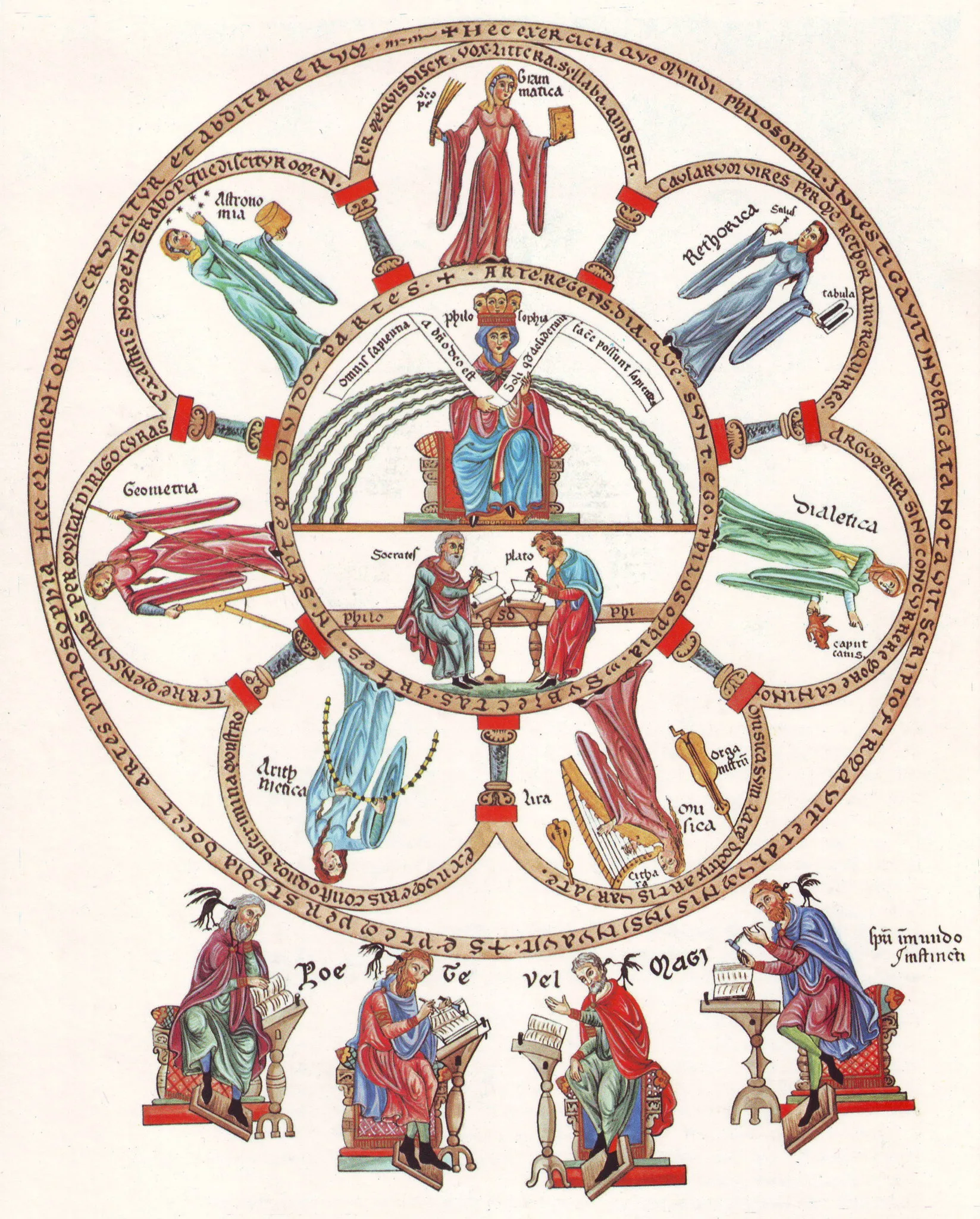Liberal Arts Education
Liberal arts in a nutshell
A liberal arts education is the cornerstone of the Western academic tradition, dating back to the earliest universities of Europe. It is a holistic approach to learning that emphasises broad intellectual exploration rather than narrow specialisation. As Saint John Henry Newman wrote in The Idea of a University, a liberal education is the highest aim of academic life—developing the mind, shaping character, and fostering wisdom.
Unlike vocational degrees that prepare students for specific jobs, a liberal arts education equips you with the intellectual tools to succeed in any field. It is pre-vocational, focusing on the skills that transcend industries: critical thinking, effective communication, and the ability to connect ideas across disciplines.
History of the liberal arts
The liberal arts tradition originated in the era of classical antiquity. At the time, it referred to the essential education needed for an individual to play an active role in civic life and emphasised writing, speaking and reasoning through three subjects: grammar, rhetoric and logic, collectively known as the trivium.
This educational model was transmitted to the Roman and medieval world. At this point, four subjects were added: arithmetic, geometry, astronomy and music, collectively known as the quadrivium.
The seven subjects in the medieval liberal arts curriculum were then transmitted via the Renaissance to the schools and universities of modern Europe and America. Over time, the trivium and quadrivium began to correlate with what we know now as the humanities and sciences.
Image: Philosophia et septem artes liberales, the seven liberal arts. From the Hortus deliciarum of Herrad of Landsberg (12th century)
Liberal arts today
Historically, the aim of a liberal arts education was to produce a person who is articulate, virtuous and knowledgable across a range of fields.
Modern liberal arts curricula offer a larger range of subjects, but they still retain the core aim of developing well-rounded individuals with transferrable skills and knowledge across a broad range of subjects.
Click here to find out more about Campion’s Bachelor of Arts in the Liberal Arts.
Click here to find out more about Campion’s Diploma of Liberal Arts.
Benefits of a liberal arts education
Make a more informed choice about your career path
A liberal arts education introduces students to a range of subjects they may not have otherwise encountered, allowing for the discovery of new interests and the pursuit of previously ignored avenues.
Develop knowledge and skills to carry you across a range of industries
A liberal arts degree covers a broader range of knowledge and skills than a degree specialising in a single discipline. Liberal arts degrees are renowned for their ability to foster:
- analytical, critical and creative thinking
- oral and written communication skills
- problem solving skills
- information literacy skills
- ethical decision-making skills
- the ability to pose meaningful questions
- self-confidence and self-understanding
Liberal arts degrees are appealing to employers
A recent study by Deloitte reported that humanities educated individuals exhibit superior critical thinking and communication skills. Significantly, Ernst and Young have reported that employers are placing higher value on critical thinking, problem-solving and effective communication than vocational schooling when recruiting recent graduates.
Develop a strong foundation for postgraduate study
Liberal arts graduates are often better equipped to deal with the rigour of postgraduate study given the focus on developing higher order thinking and communication skills in their undergraduate study.
Increase your earnings potential
A recent report from the Georgetown University Center on Education and the Workforce (CEW) has found the average 40-year ROI of a liberal arts degree to be nearly $200,000 higher than the average ROI of all college graduates.
A liberal arts education is education for life
The value of a liberal arts degree goes well beyond its potential to aid your future career. A liberal arts degree produces well-rounded, articulate graduates with a love of learning and the ability to engage with everything life has to offer on a deeper level.

